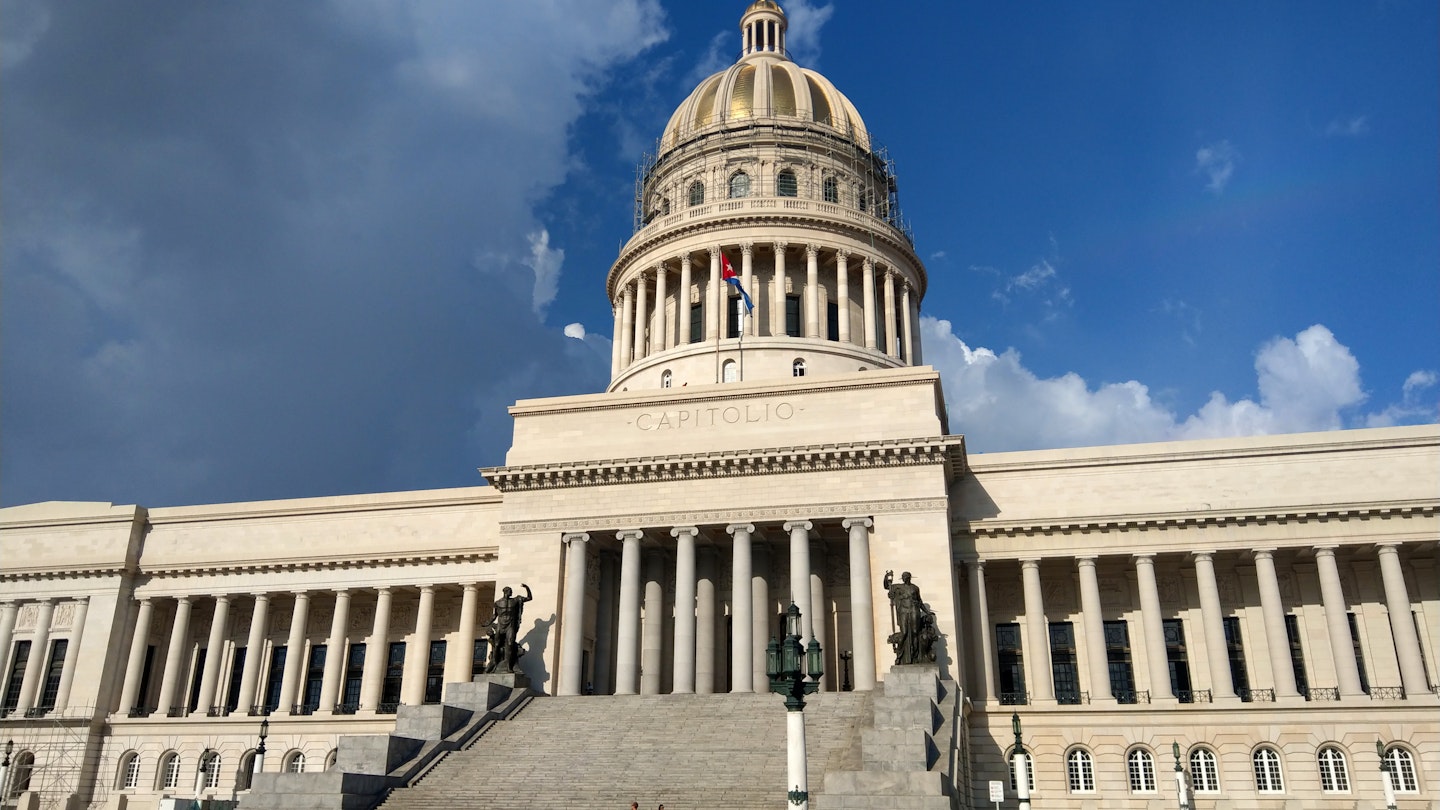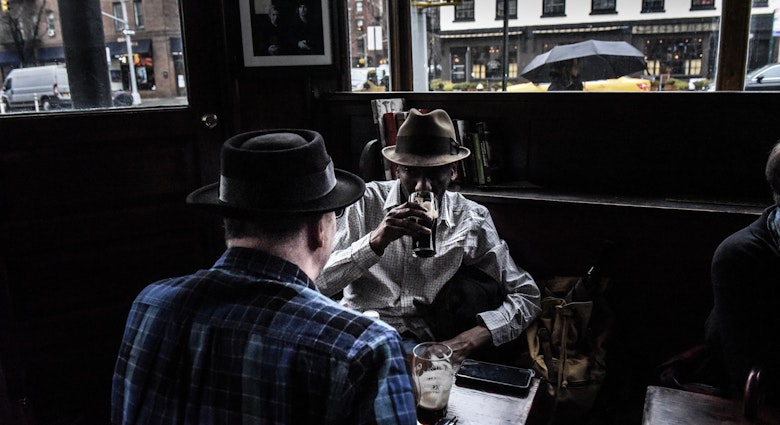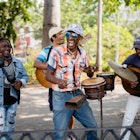Meticulously restored and in some cases, literally reborn from its ruins, Havana’s most iconic buildings are primed and ready for a celebration. Cuba’s most important city turns 500 in November and the buildings and monuments that shape its urban landscape are finally fully repaired and open to the public.
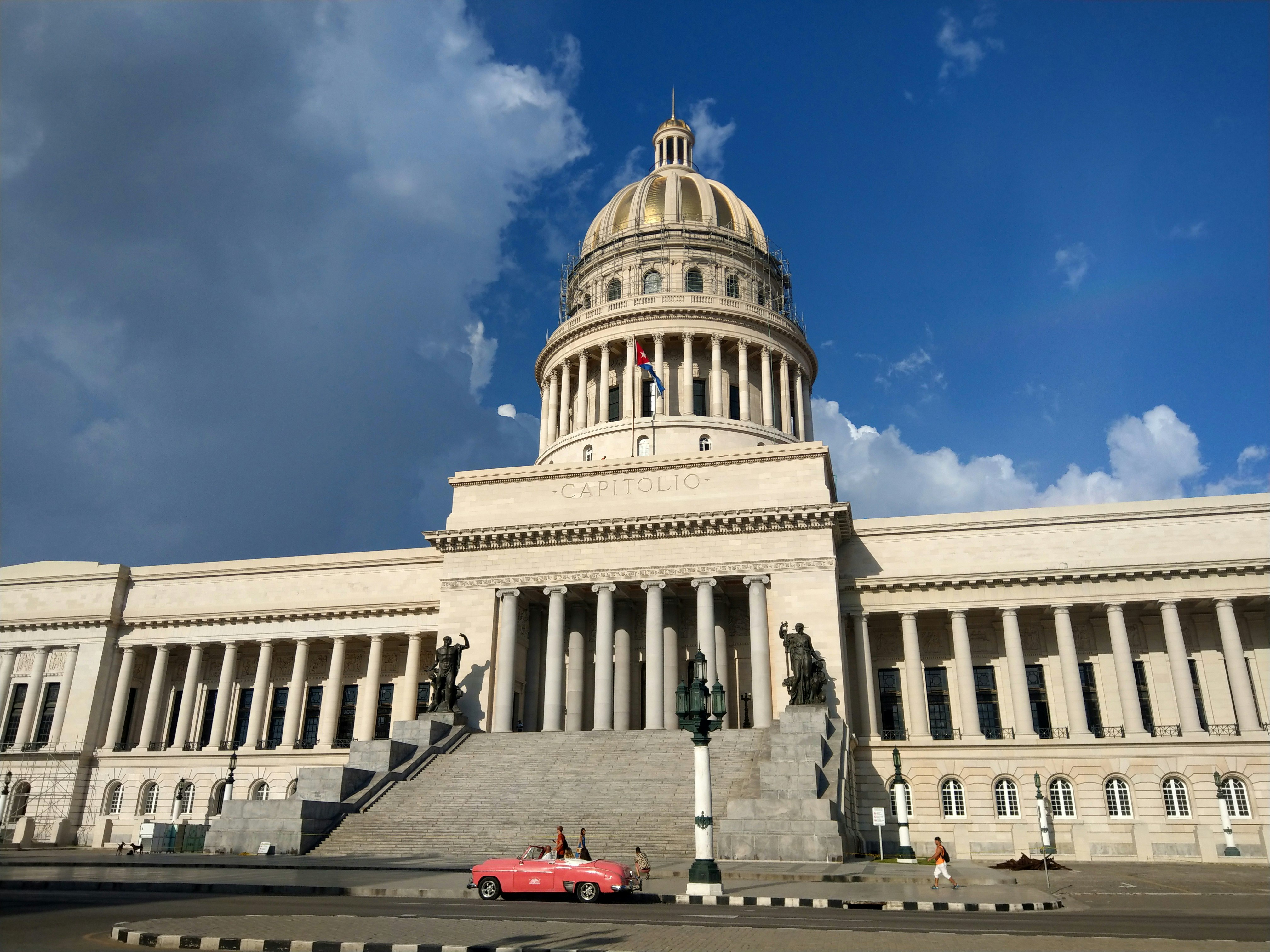
Capitolio Nacional
The Capitolio Nacional underwent years of dedicated - and mostly handcrafted - restoration to each of the halls, historic rooms and intricately elaborate ceilings that made it famous back in 1929. Architecture and history buffs can take the one-hour tour (CUC $10 per person, 10am-noon), guided by experts from the Office of the City Historian.
Cuba’s history inspired themed rooms and collections at both wings, but cameras usually tilt towards the 24k-gold-coated cupola, the shining bronze statue in the Salón de los Pasos Perdidos (Hall of the Lost Steps) or a replica of a 25-carat diamond right below the dome.
Avenida del Puerto
Avenida del Puerto (the port’s avenue) was the city’s first official ‘border’ between the urban areas and the commercial life that pulsated back in the 16th to 18th centuries. For the city’s 500 anniversary, a pair of porticos with the original medallions that guarded the entrance to the city in the 19th century – one at Plaza San Francisco de Asis and the other at the beginning of Calle O’Reilly – have been reinstalled.
8 ways to celebrate Havana's 500th anniversary
Cuatro Caminos Market
Occupying an entire block in the confluence of Old Havana, Centro Habana and El Cerro municipalities, the Mercado Único de Cuatro Caminos was inaugurated in 1920 and played a key role storing food supplies coming to and from the Havana port before distributing them to the city’s street vendors. It was one of Cuba’s most visited food markets before it closed for restoration in 2013.
The Mercado will open with fully renovated facilities on its two floors and basement, including fruit and vegetable stalls, cafeterias and a section for items related to Afro-Cuban religions. It’s an icon of the non-touristy part of the city and will be an important landmark for foodies and travelers wanting to visit an authentic Cuban agro-market.
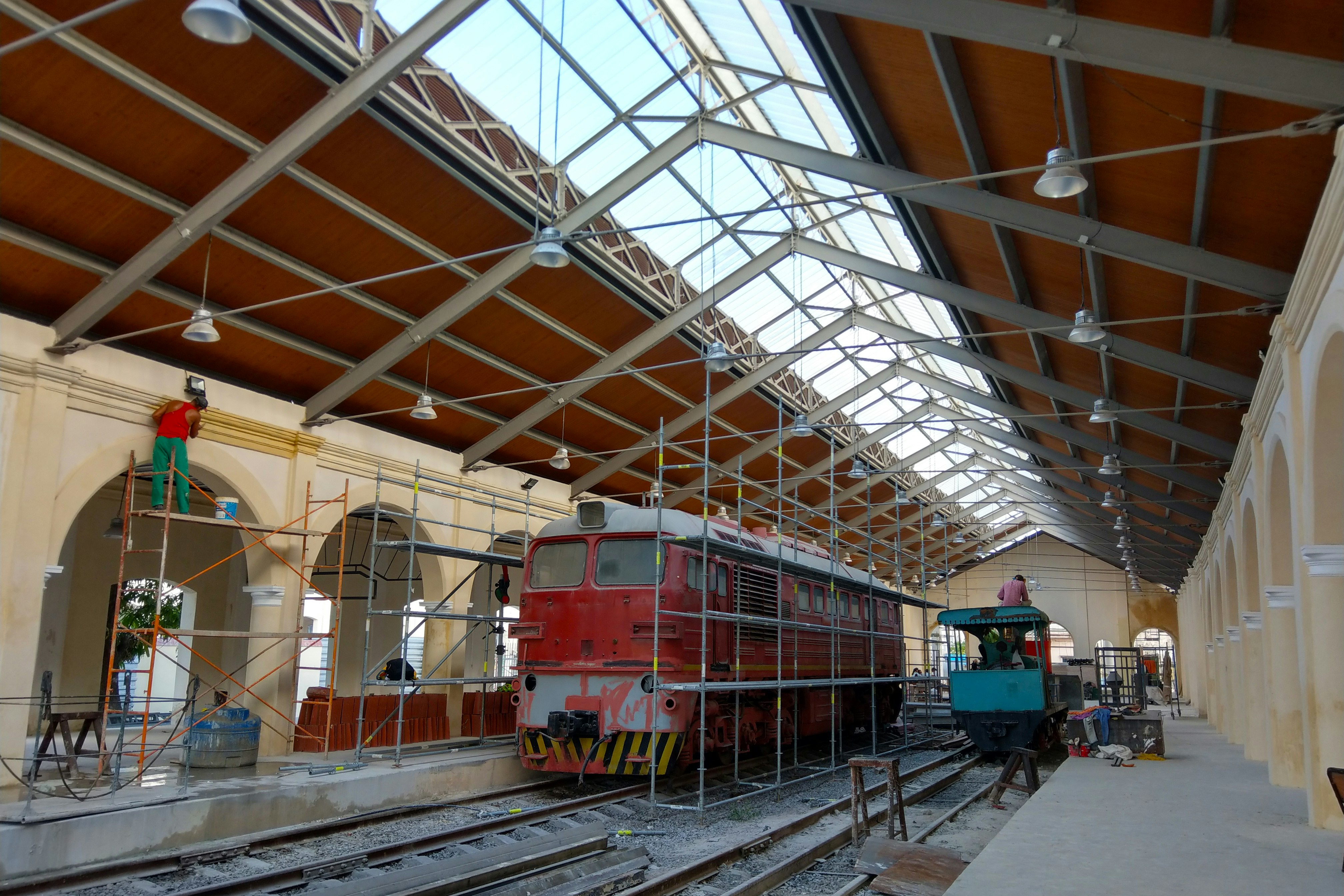
Railway Museum
The first steam railway line was inaugurated in Cuba in 1837, years before any other country in Latin America or even Spain. The Museo de Ferrocarriles at Estación Cristina (named after the Spanish queen who authorized the funds for the first railroad investment on the island) is a doorway to Cuba’s history through trains and locomotives.
The station (1861) and adjacent train platform were fully restored for Havana’s 500 anniversary and turned into a one-story museum with an open-air area that exhibits 25 old locomotives, including La Junta (1843).
Estación Central de Ferrocarriles
Built in 1912, the Estación Central de Ferrocarriles was left in ruins for decades and closed in 2016 for a full restoration. The building, an architectural masterpiece, features two 121-foot (37 meters) symmetrical towers covered with intricate decorations and terracotta pieces. Inside, marble columns and inner balconies overlook a central hall, lit with stained glass windows.
Due to become Cuba’s most important train station – welcoming around 16,000 visitors daily – Estación Central de Ferrocarriles is being restored for Havana’s big milestone with modern interiors, including shopping arcades, electric stairs, smart lighting and WiFi areas.

Cementerio de Colón
The Necrópolis Cristóbal Colón is the largest and finest cemetery in Latin America (and a national monument since 1987) featuring over 450 mausoleums and countless grand marble figures spaced over 50 hectares. Walking its central avenue between the huge Byzantine-Romanesque Puerta de la Paz (Peace Gate) at the entrance and the Capilla Central to the center of the graveyard provides a glimpse of the most famous tombs, including the 32-foot (10 meters) high firefighters’ monument on the right.
A guided tour (CUC $5) often includes a visit to the tomb of Señora Amelia Goiry, also known as La Milagrosa (the Miraculous Lady), whose gravesite is regarded as a hallowed place where people go in search of miracles.
But sure to ask for a visit to the Art-Decó masterpiece built by a heartbroken Pedro Baró to house the remains of his beloved wife Catalina de Lasa.
Boulevard de San Rafael
Havana’s most important shopping street from the 1920s to the 1950s, the Boulevard de San Rafael is a five-block pedestrianized segment of Calle San Rafael, from Paseo de Martí (Prado) to Av de Italia (Galeano), hosting more locals than tourists. Market supplies and gifts are less expensive than those at its sister site, the more-tourist-packed Calle Obispo.
Revamped after decades of neglect, the boulevard now boasts privately-run stores and cafeterias alongside movie theatres, beauty shops and jewelry stores. For a break from shopping and a taste of Cuban art, visit galleries La Acacia and Collage Habana.

Quinta de los Molinos
It took a few wheelbarrows to do it, but Cuba’s first botanic garden was moved from Centro Habana to its second home at Quinta de los Molinos in 1838. The place was originally a tobacco-processing factory that used windmills (hence the molinos part of the name – the other part, quinta, alludes to when the country’s captain generals had a huge country house built on the premises).
When the Jardín Botánico moved to a bigger area on the outskirts of Havana, the quinta became (and still is) a green oasis in the middle of a growing city. Guided tours (Thu-Sun; 10:30am; CUC $5) take visitors to the butterfly breeding garden and highlight a number of flora species endemic to the island. The main building, which was also the home of Máximo Gómez, the Dominican general who fought in all of Cuba’s anti-colonialist wars in the 19th century, was fully restored for the city’s anniversary.
Avenida de los Presidentes
Connecting the sea drive of the malecón with the most metropolitan area of Havana, the Avenida de los Presidentes (aka Calle G) works as a key artery in the city’s Vedado area. Residential mansions from the pre-revolution era have been transformed into museums (like Museo de la Danza), restaurants, embassies, schools and offices.
Dotted with statues of Latin-American martyrs – including Salvador Allende (Chile), Eloy Alfaro (Ecuador), Benito Juárez (México) and Simón Bolívar – the avenue’s 2km-long central walk has been revamped with new benches and gardens.
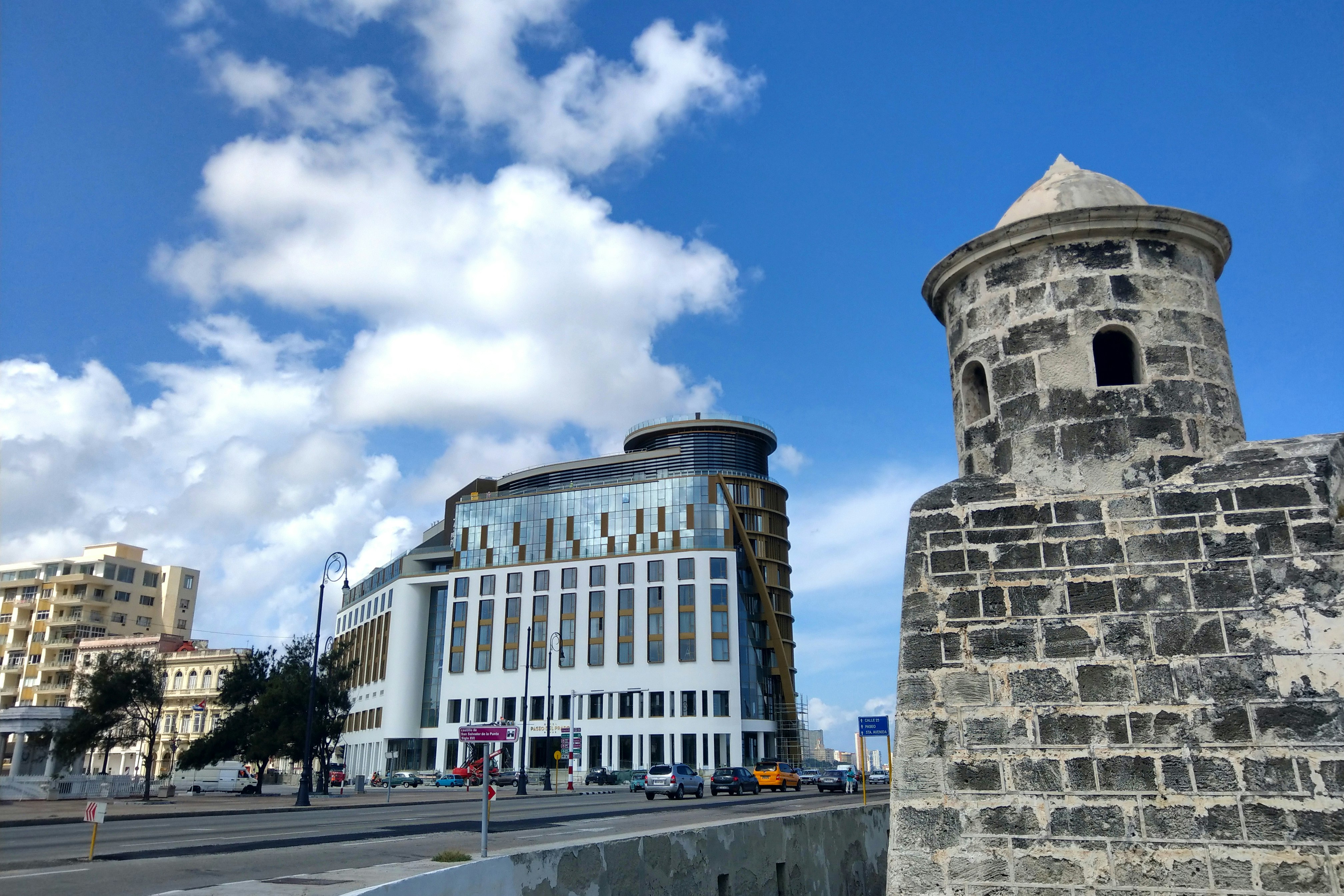
Hotel Prado y Malecón
The newest hotel in town, Prado y Malecón, overlooks Havana bay’s entrance with a boat-like design facing Castillo de los Tres Reyes del Morro. Located at the end of Paseo de Martí (Prado), Hotel Prado y Malecón offers great views over the city’s oldest town and the ocean.
With 250 rooms and suites on 10 floors, the hotel was designed with Cuba’s cultural icons in mind and features references to the ballet, salsa and son Cubano. A rooftop infinity pool completes the elegant touch and sets a new bar for Havana hotspots.

